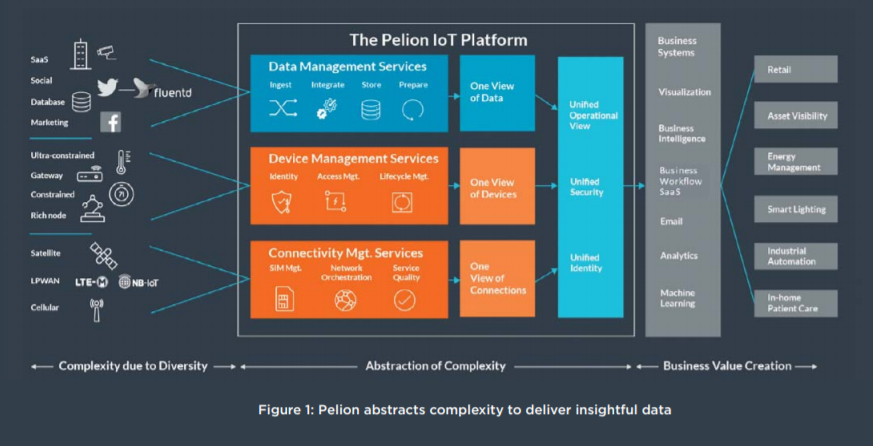As networks transform, new devices come to market and data is ingested from new sources, Robin Duke-Woolley, the chief executive of Beecham Research, interviews Charlene Marini, the vice president and general manager of devices in the IoT Platform business unit at Arm. Deriving the full value and benefit of trillions of IoT devices will require a platform for data, connectivity and device management that brings together a large ecosystem of developers in a secure yet simple to use way, she says
Robin Duke-Woolley: Arm has traditionally had an extensive ecosystem. How has this been adapted to address the opportunities of IoT?
Charlene Marini: We are targeting the scale of IoT. Our investments in processor design, software and services are focused on how we enable the Arm ecosystem of chipmakers, developers and original equipment manufacturers (OEMs), as well as enterprises and consumers to derive the most value from the wave of connected devices coming. Along with our device management capability – enabling secure control and data access – we also provide connectivity as part of an overall intelligent connected device platform. We have focused our investments on how to enable the broadest range of devices; heterogeneous networks and systems, and how organisations can obtain insights from the harvested data. Today, we have more than 1,000 customers and 150 ecosystem partners. That includes silicon suppliers, device suppliers, system integrators, application providers, as well as a robust and growing developer ecosystem of more than 425,000 third party developers. The bulk of these partners are in embedded design, but there’s also a growing emphasis on cloud applications.

RD-W: Where does Arm aim to add new value for your customers?
CM: Figure 1 shows where we are in terms of the value we provide to our customers. The three services of Connectivity Management, Device Management and Data Management are the product lines within Arm Pelion and revolving around that centre is the device ecosystem and our activities to enable a vast range of secure, intelligent devices.
Device management brings the capability to manage firmware and application updates together with insights into how devices are performing. From a visibility perspective, knowing what’s on your network, the firmware and the devices, is the basic level of understanding that’s needed. Then you need to know how your devices are operating – normal or a potential problem? The third level of need is the ability to take actions based on your observations; you must be able to act at a device fleet-wide level as well as on individual devices.
In addition to value gained at the operational level is the benefit of value-added services. Robust device management allows you to add new applications; features and functionality securely to a device in the field, and apply new policies for enhanced functionality through the application. These are the two main areas adding value in the market today: holistic operational integrity and the building and adding of services which enhance the value of our customers’ products.
RD-W: The Pelion IoT Platform also includes a Data Management component. Can you say more about your data management capability?
CM: One of the things that is very attractive to our customers is our data capability, both the quantity and velocity of data that we can ingest and process. To give an analogy, similar to connectivity and device management, a lot of value in data management is in how you can abstract insights from heterogeneity. You are likely to have multiple sources of data, all with individual characteristics in terms of velocity, how the data is organised, and so forth. Fundamentally, the data management service we offer enables broad data ingestion from different types of devices and the ability to mix that data with other types of enterprise data. We believe in most IoT use cases, device data will need to be combined with other data to get to the core insights, so enabling easy ingestion and understanding across different data types is essential.
RD-W: What other types of data do you mean?
CM: If we take a factory use case; that data might come in the form of system records, or weather data, it might even be supply chain data being fed into the factory system. If we take more of a consumer view; that data might be social media or data from other properties that the brand or consumer device manufacturer offers.
What we give our customers is a very sound data management platform capable of ingesting any type of data for their algorithms, to store that data and present it consistently to different types of tools they want to deploy. We have some tools that we integrate with, but there are also other tools, and partners, that our customers might work with on the pure analytics front. Enabling the broadest array of tooling and analytics is really important for all of our customers.
RD-W: Can you name some of those tools?
CM: One is Treasure Boxes which enable our customers to use pre-formed analytic models, or they can create their own. It is offered by Treasure Data, the enterprise data management company that Arm acquired in 2018. We also offer tools such as Jupyter Notebooks which are a standard open source way for data scientists to collect and organise their library of models.
RD-W: Apart from the enablement of data analytics and the processing of the data, what else does Arm provide?
CM: The other important aspect is enabling multiple different outputs from data. There are usually multiple workflow outcomes that our customers are trying to achieve so having off-the-shelf plug-ins for those capabilities is essential for integration. If you think of email, it might, for example, be an alert system. You want to make sure you can generate those automated emails. It might be things like CRM, different business intelligence tools, or visualisation tools. We provide plug-ins for those and ways to modify those plug-ins that enable those integrations more easily.
RD-W: Those are rules-based alarms that send out alerts when a threshold has been reached?
CM: Yes. It is important that our services are generally applicable. We tend to focus on enabling use cases end-to-end and currently target areas such as retail, utilities, industrial automation and energy management, including metering. For all of these, we’ve made further specific investments.
RD-W: Are those four the leading sectors for Arm?
CM: In addition to those, we work in smart lighting and smart spaces – touching smart buildings and smart cities. This is about how you gain insight from spaces. We have been focused more on indoor spaces to date, but the technology is just as applicable to outdoor.
RD-W: Is this in-building lighting management only?
CM: We have found that there is a strong need for more occupancy and environmental management. We are working with Prolojik around lighting management. We are also enabling workspace insights through our Space Analytics solution. This includes providing insights and understanding around occupancy, coworking, or office space – such as where people tend to congregate. That may be because the lighting is better in some places, or it may be due to other environmental factors. What often happens is that companies install one type of sensor capability for their primary use case. For office buildings, many deployments start with lighting as part of an energy management strategy. But the lighting that was installed had other sensors as well, such as occupancy sensors used to determine whether a light should be on or off. From this latent capability, you can then gather other useful data for your building planning. You might find five conference rooms are hardly ever used so those low occupancy rooms may not all be needed. That is where you start to get derivative value from the data. So smart lighting might be the initial IoT motivation, but it becomes clear how the data being gathered can also be used to create new insights.
RD-W: When we talk about other kinds of sensors, can you indicate what sort of connectivity you are thinking about?
CM: Connectivity varies a lot by use case as well. Broadly, with low power wireless and cellular we are seeing increasing interest around movable applications. That is a very interesting area for us. We think that is going to continue to gain momentum over the next year. The second area is mesh, especially with utilities for some spaces applications. Thirdly, we are also seeing demand for higher data rate cellular for backhaul in these applications. As people build out their sensor capabilities and sensor network in a building or field, higher data rate 4G cellular is the gateway for backhaul.
RD-W: So how would you summarise what Arm is offering for IoT solutions?
CM: The main thing for us is providing the ability to deal with complex heterogeneous data environments and enabling IoT deployments that are easily-scalable. The fact is that organisations’ IoT networks are going to be different, the devices making up those networks are also going to be different, and the variety of data that must be ingested, aggregated and understood will be very different. We think this is where Arm adds significant value. We have unique device understanding, with 160 billion Arm-based chips shipped over the last 30 years. We also have world class secure device management, connectivity and data expertise. That combination of knowledge puts us in a great position as we understand the device universe, what will be possible in the future, and how to manage and get value from the resultant data.
For me, this is the most exciting time for the IoT – companies are moving quickly from research and planning into early and, for some use cases, extensive deployments. The question is whether everyone will succeed in realizing the benefit of intelligent, connected devices? It’s a question we’re going to help answer in as many ways as possible as we know the IoT is absolutely not about one size fits all.










